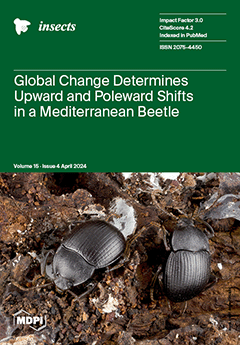Epidemics of arboviruses in general, and dengue fever in particular, are an increasing threat in areas where
Aedes (Ae.) aegypti is present. The effectiveness of chemical control of
Ae. aegypti is jeopardized by the increasing frequency of insecticide resistance. The aim of this study was to determine the susceptibility status of
Ae. aegypti to public health insecticides and assess the underlying mechanisms driving insecticide resistance.
Ae. aegypti eggs were collected in two study sites in the vicinity of houses for two weeks using gravid
Aedes traps (GATs). After rearing the mosquitoes to adulthood, female
Ae. aegypti were exposed to diagnostic doses of permethrin, deltamethrin and bendiocarb, using Centers for Disease Control and Prevention (CDC) bottle bioassays. Unexposed, un-engorged female
Ae. aegypti were tested individually for mixed-function oxidase (MFO), glutathione-
S-transferase (GST) and α and β esterase activities. Finally, allele-specific PCR (AS-PCR) was used to detect possible
kdr mutations (F1534C, S989P, and V1016G) in the voltage-gated sodium channel gene in insecticide-exposed
Ae. aegypti. Most traps were oviposition positive; 93.2% and 97% of traps contained
Ae. aegypti eggs in the 10
ème arrondissement of Cotonou and in Godomey-Togoudo, respectively. Insecticide bioassays detected resistance to permethrin and deltamethrin in both study sites and complete susceptibility to bendiocarb. By comparison to the insecticide-susceptible Rockefeller strain, field
Ae. aegypti populations had significantly higher levels of GSTs and significantly lower levels of α and β esterases; there was no significant difference between levels of MFOs. AS-PCR genotyping revealed the possible presence of 3
kdr mutations (F1534C, S989P, and V1016G) at high frequencies; 80.9% (228/282) of the
Ae. aegypti tested had at least 1 mutation, while the simultaneous presence of all 3
kdr mutations was identified in 13 resistant individuals. Study findings demonstrated phenotypic pyrethroid resistance, the over-expression of key detoxification enzymes, and the possible presence of several
kdr mutations in
Ae. aegypti populations, emphasizing the urgent need to implement vector control strategies targeting arbovirus vector species in Benin.
Full article






